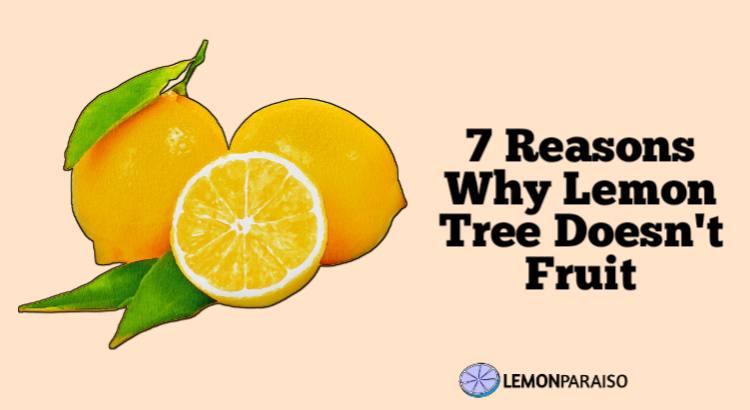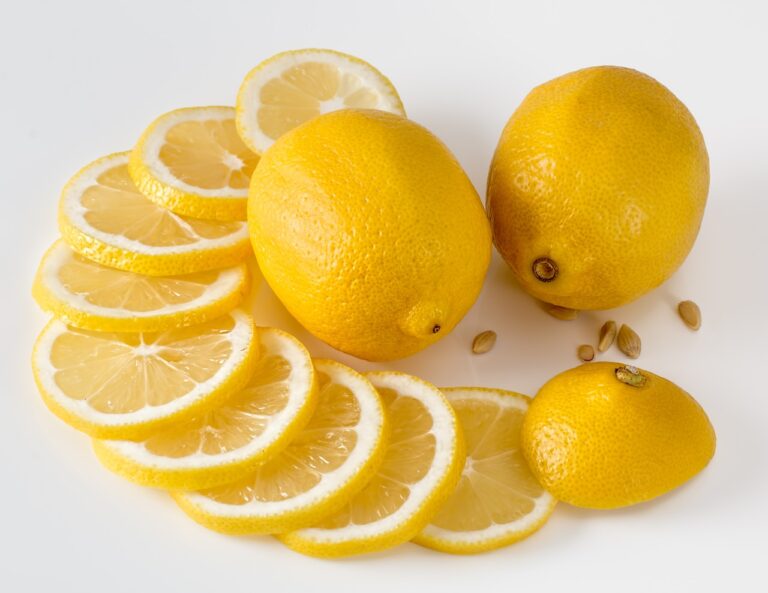7 Reasons Why Lemon Tree Doesn’t Fruit

Growing a lemon tree takes time. Its exciting to see the first fruits to grow on the tree. Sometimes it’s hard to wait but it’s really worth it when lemon trees are start producing fruits. But what if the lemon trees are not producing fruits what are the possible reasons?
7 Reasons Why Lemon Tree Doesn’t Fruit
The Lemon Tree Is Not Mature
If your lemon tree is not mature it will not produce fruits. You need to wait for them to mature before they can start producing fruits. You need to wait around 3 to 5 years before seeing the first lemon on the tree.
Young lemon trees aged 1-2 years old are not yet capable of fruiting. You just need to wait for them and give them a time and their need to grow.
Problem In Pollination
Lemon trees are self-pollinating and they can produce fruits without cross pollination. But even if they are self-pollinating, you can still help your lemon tree to produce fruits.
You can do hand pollination by using a small dry brush and start brushing the flowers to help move the pollen to the flowers’ stigma or try to use a lemon’s flower and brush them onto other flowers too. In that way, more flowers can be pollinated.
It is normal that some of the lemon flowers will fall on the ground. Not all of them will turn into lemons. Bees can also help the pollination of lemon tree to prevent them from dropping.
Watering Issues
Water is essential for most plants and trees. The lemon trees also need water to thrive well which helps their roots to grow bigger and spread in the soil.
You need to water the lemon tree at least once or twice a week. You don’t need to water the tree every day and water them deep but not too often.
Potted lemon trees need water more often compared to ground trees. There are tiny holes or air pockets in the soil and the oxygen and wind will enters into it which make the soil dry faster.
You can check the soil if you need to water your lemon tree by pressing your finger two-three inches deep in the soil. If you feel that the soil is moist you don’t need to water your lemon trees but if dry you need to water them.
Try to avoid overwatering your lemon tree to prevent root rot. Root rot is common for the citruses and you need to be careful in watering. Also if your place experiences floods you need to make good waterways to prevent floods.
Nutrients Issues
Lemon trees need nutrients to grow well. Nutrients also help the lemon trees produce flowers and fruits. To make lemon trees produce fruits you need to apply phosphorus.
Phosphorus helps in the production of flowers and fruits. There are many kinds of fertilizer that can be used for lemon trees such as 2-1-1, 6-6-6, 8-8-8, or fertilizers high in nitrogen like 12-6-6 and 10-5-5.
It is best to conduct soil tests first before applying fertilizer so that you know which nutrients are lacking and which are abundant.
Too much nitrogen on the soil and little phosphorus can be a reason why there are no fruits on your lemon trees. You need to add more phosphorus to make the tree able to bloom and fruits.
There are other minerals needed by the lemon tree like zinc and magnesium. If the soil lacks magnesium, Epsom salt can be used to improve the soil quality.
Lacking Sunlight
The Lemon tree needs enough sunlight daily to grow better and bloom. During the early stage of growth, they need sunlight of at least 4 hours per day.
They are still small and that hour’s length of sunlight is enough for them to thrive well.
Mature lemon tree needs sunlight for at least 6 hours daily. If you planted your lemon trees in a pot/container you need to place them in a well sunny place.
Some people place them indoors and place them near the window where sunlight is abundant. But it is best to place them outdoors especially when the temperature becomes fine. When the weather becomes cold you can try to use LED grow lights that will keep them warm.
Pests And Diseases
Pests and diseases can attack the lemon tree and make them grow poor. Some of the signs that your lemon tree is being attacked by pests or disease are curl and yellow leaves. The leaves may start to curl up and some leaves might have turned yellow.
When the leaves are affected, the lemon tree cannot make its food. The functions of leaves are not working properly which may lead the tree to grow stunted and will not produce lemons.
There are many pests and diseases and some signs that may show up on the lemon tree and to control them you need to use pesticides and fungicides. When you spot them on your lemon tree you need to get rid of them immediately. If you let them on your tree for a few days it will cause more damage.
You can use a water hose and blast them with water to get them off the tree. The water pressure from the hose is strong enough to make them fall on the ground.
You can also try neem oil and other horticultural products. Just make sure don’t apply them when the sun is not too hot because it can cause burn damage on leaves and the trunk. Also, read the instructions carefully on the package.
You Grow A Not True-To-Type Lemon Seeds
Most of the lemons are not true-to-type. Being not a true-to-type means that if you grow a lemon tree from seed it will not grow the same as the parent tree.
It may grow but will produce different fruits than expected. It may also never produce fruits at all. That is why most of the lemon trees sold at the nursery and garden centers are grown through grafting and budding.
So if you try to grow a lemon tree from seed and it doesn’t produce fruit, one reason why it doesn’t fruit is that the seed you grow is not true-to-type.
It will takes some time for a lemon tree grown from seed to know if it will produce fruits. You need to wait around 5 to 10 years before you can see fruits or not. It is a little bit hard to find true-to-type seeds but it’s also great to start from.
How To Get Lemon Trees To Fruit?
To get lemon trees to fruit, it’s important to first ensure that the trees are healthy and well-cared for. This means providing the trees with plenty of sunlight, water, and nutrients, and protecting them from pests and diseases.
To encourage the trees to produce more fruit, it’s important to regularly prune them to remove any dead or damaged branches, and to thin out the fruit when it begins to appear.
This will help the tree focus its energy on producing a smaller number of larger, high-quality fruit.
Additionally, providing the trees with adequate amounts of water and nutrients during the flowering and fruiting process will help to ensure a good harvest.


